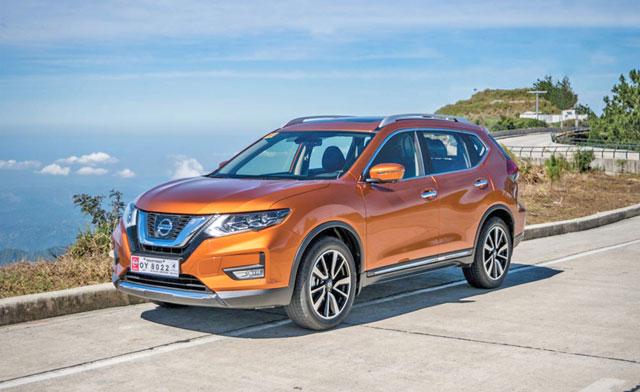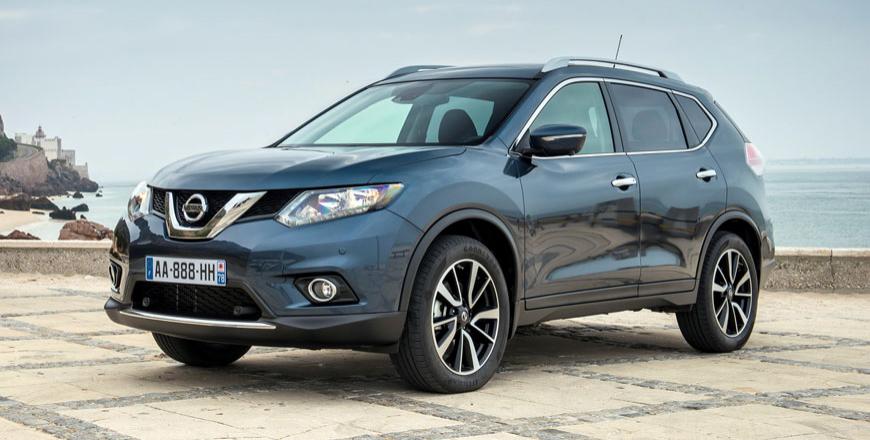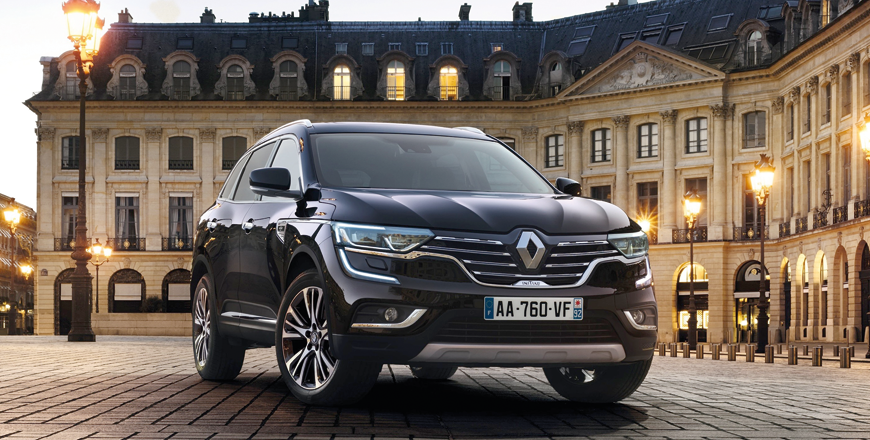You are here
Nissan X-Trail: X hits the spot
By Ghaith Madadha - Jan 16,2018 - Last updated at Jan 16,2018

Photos courtesy of Nissan
Among the latest additions to Nissan’s extensive SUV and crossover line-up, the 2018 X-Trail is a face-lifted and revised model rather than all-new vehicle. With an emphasis on updating and improving its exterior and interior aesthetics, technology, driving and refinement, the refreshed X-Trail builds on a successful formula which has made it the world’s best-selling SUV, according to Nissan, with 835,000 units shifted worldwide, just in 2016.
A conservative update, the 2018 retains its predecessor’s versatility, practicality, accessibility and user-friendly cabin and driving experience.
Curvy and snouty
With swooping bonnet, heavily browed and squinting headlights, and a curvy waistline that rises towards high-set and bulging rear lights and a C-pillar with an upwards kink and boomerang-like forward-raked design, the X-Trail has a palpable sense of momentum and motion to the way it sits on the road. Refreshed subtly for 2018, the new X-Trail, however, has a snoutier and more aggressive “V-motion” grille that is wider, lower and shinier. Set to a black background, its grille and intake also now use slats and slots rather than a mesh design. New, more vibrant colours meanwhile include red, orange, brown, blue and gold beige.
Featuring more sculpted and upright bumpers at the front and back, the updated X-Trail also gets a rugged-looking metallic front and rear skid plate-style elements, to go along with its good approach and departure angles. Also revised are its fog lights and side sills, while the headlights — and rear lights — receive a squintier and moodier treatment with a lower kink and boomerang motif LED signature outlines. Sportier and with a more up-market feet to it, the new X-Trail also drops the clear rear light cluster casing and gets a shark fin style rooftop antenna.
Seamless delivery
Powered by a transversely-mounted and unchanged 2.5-litre naturally-aspirated four-cylinder engine, the X-Trail develops 169BHP at 6,000rpm and 172 lb/ft of torque at 4,000rpm, which allows it to carry its 1,637kg mass at a decent pace from standstill to 100km/h and with versatility on the move. Smooth, refined and eager, the X-Trail’s engine is progressive in delivery and features good throttle control and response. Capable of keeping a good pace, the X-Trail’s chassis would have easily been able to handle more power, which in turn would have been particularly welcome during test drive on steeply inclined Lebanese mountain roads.
Fitted with a continuously variable transmission (CVT) that constantly adjusts ratios to exploit engine speed and torque for efficiency, the X-Trail is smooth and flexible. With a wide range of short and tall ratios, it delivers responsive performance and reserved 6.5l/100km combined fuel efficiency. It may not have the clarity, commitment or precision of a traditional gearbox when one needs a certain gear for a certain situation under hard driving, but the X-Trail’s CVT well mimics an automatic with pre-set ratios that one can also select to allow it to rev more eagerly and for engine braking on steep descents.
Unexpected agility
Gaining momentum with a slingshot effect as its engine revs and transmission ratios shift under hard acceleration, the X-Trail is not without a sporty and engaging side. Tidy on turn-in and in its handling in general, the X-Trail drives with more eagerness and cornering adjustability than expected in its segment, especially when entering a corner sharp and early and letting the weight shift to the outside and rear, before powering onto a straight. Keen and chuckable through corners, the X-Trail’s cornering agility is aided by its brake-based Active Trace Control torque vectoring system. Steering is meanwhile quick and light.
With suspension and steering unchanged, the X-Trail revised remains stable and refined on highway and manoeuvrable in the city, while slightly lower profile 225/55R19 tyres slightly improve handling without noticeably affecting rid comfort and fluency over imperfections. Sure-footed through corners, the X-Trail’s front-biased four-wheel-drive can reallocate more power rearwards when necessary and lock all four wheels at lower speeds, while ride quality is meanwhile settled over rebound.
Driving position is supportive and comfortable, and good road visibility — aided by blind spot sensors, 360° Around View Monitor, cross-path traffic detection and Intelligent Rear View Mirror — allowed one to easily negotiate narrow, crowded and chaotic Beirut streets.
Usability and equipment
Unique in its segment for being optionally available with seven-seats, the spacious X-Trail’s sliding and reclining 40/20/40 split middle bench can be adjusted to nine configurations, including easy rear seat access and versatile space allocation between cabin and cargo, with 455-litre minimum and 1,996-litres maximum luggage volume. Well accommodating even large and tall occupants in the middle row, the X-Trail’s client base is, however, mostly consists of those married with children using it as a daily drive, who go for seven- rather than five-seat versions. With that in mind, the X-Trail update focuses on improving usability and practicality, and includes a motion sensing automatic tailgate.
Refreshed with a more up-market approach inside the 2018 X-Trail features new interior trim, quality and textures with improved padding, and smaller sporty flat-bottom steering wheel, while the top spec SL model receives a warm and welcoming black and tan leather option.
Updated to keep up with evolving technology, the X-Train SL comes with standard adaptive front headlights and Intelligent Emergency Braking, while an optional Technology Package adds adaptive Intelligent Cruise Control. Additionally, the X-T-Trail’s navigation system is improved, while its infotainment system features a seven-inch screen, six speakers and Bluetooth and mobile connectivity.
TECHNICAL SPECIFICATIONS
|
Related Articles
First introduced in 2013 and significantly updated with renewed emphasis on improved exterior and interior aesthetics, driving characteristi
A more stylised successor to Nissan’s family crossover SUV, the new X-Trail’s is more assertive-looking and in line with Nissan’s familial d
First introduced in 2016, the second generation Renault Koleos is a significant step upmarket from its predecessor, and is now positioned at



















